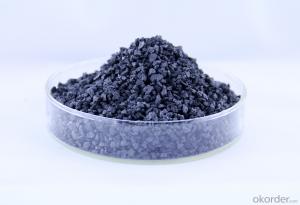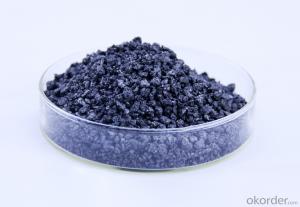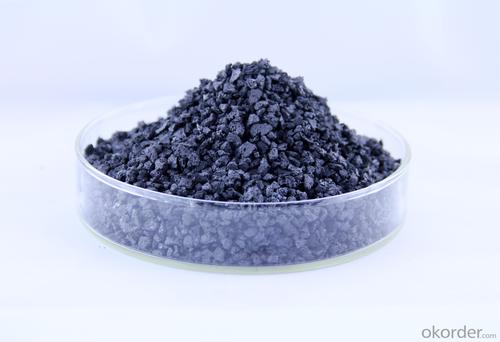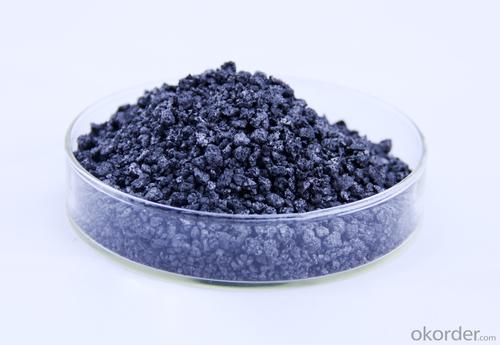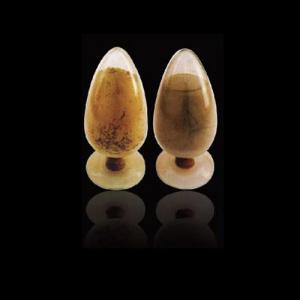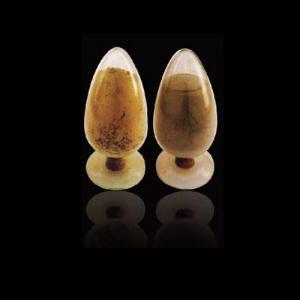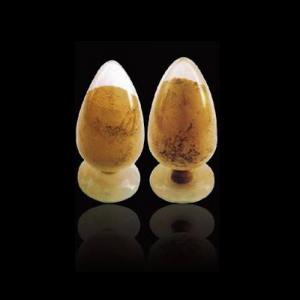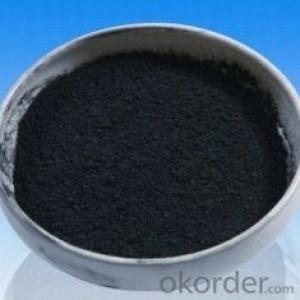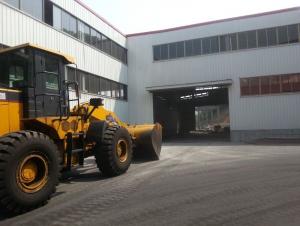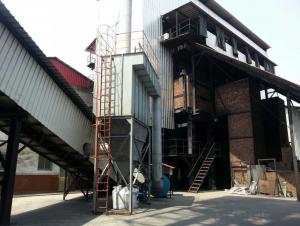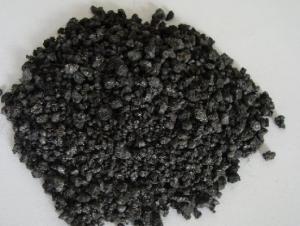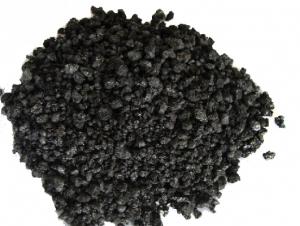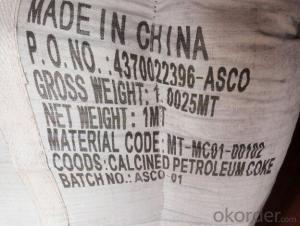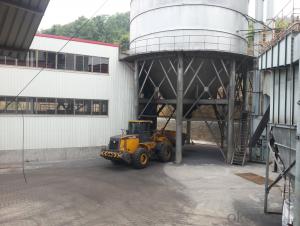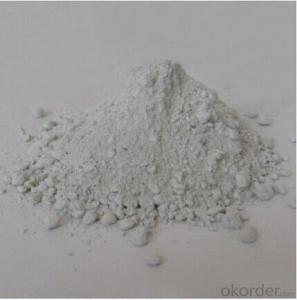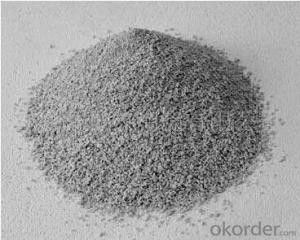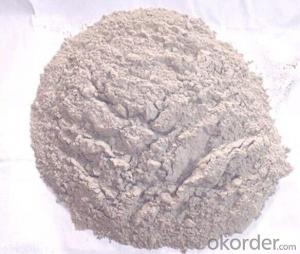Monolithic Refractories for Iron and Steel Industry - Calcined Petroleum Coke 1-5mm FC:98.5%min
- Loading Port:
- Shekou
- Payment Terms:
- TT OR LC
- Min Order Qty:
- 20 m.t
- Supply Capability:
- 1000 m.t/month
OKorder Service Pledge
OKorder Financial Service
You Might Also Like
Factory Background
The factory is majorly running and operating carbon additive (pitch coke, calcined petroleum coke and anthracite), low nitrogen carbon additive, and brake pad making material. Company is the long term supplier of Sinosteel Corporation, Shanghai Carbon Corporation, the plant of SGL Group the Carbon Company in China and some largest special carbon products producing plants.
YUAI also supplies huge amout of high quality carbon additive and graphite carbon additive to steel plants, foundries and ferrotungsten plants. YUAI has been assigned by BAO STEEL as the only organization for processing pitch coke for export purpose. The group’s major products are constantly exported to Japan, Korea, Malaysia, South East Asia countries, Europe and America, which receive praises by our consumers.
The group has invested numbers of calcinators in Anhui China to ensure the capability of producing and processing huge amount of carbon additive. Further investment is on process. According to the orders from customers, YUAI is able to processing and providing different specifications of carbon additive and other products. To provide best quality of products and to offer customers most satisfied service is YUAI’s operating objectives.
Calcined Petroleum Coke
FC:98.5%min,
S:0.5%max
A:0.8%max
V:0.7%max
Mositure:0.5%max
Size:1-5mm
This product is mainly used in steel-making and foundry. Calcined Petroleum Coke
Calcined Petroleum Coke comes from delayed coke which extracted from oil refinery. Although Calcined Petroleum Coke contains a little bit higher level of sulfur and nitrogen than pitch coke, the price advantage still makes it widely used during steel-making and founding as a kind of carbon additive/carburant.
Packaging & Delivery
Packaging Detail:25kg paper bag into 1t weaving bag 5kg, 10kg and 20kg weaving bag into 1t weaving bag 25kg weaving bag put on pallet covered with entanglement wrap product direct into packing bag 25kg paper bag put on pallet covered with entanglement Wrap 25kg weaving bag into 1t weaving bag.
Delivery Details: 7 days
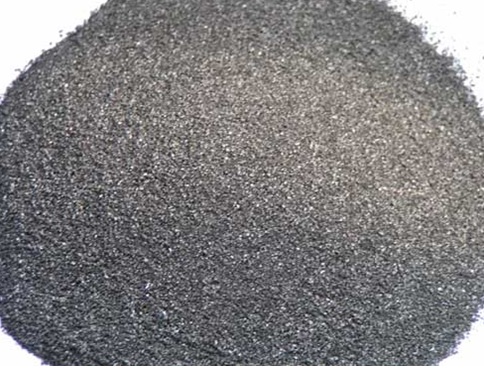
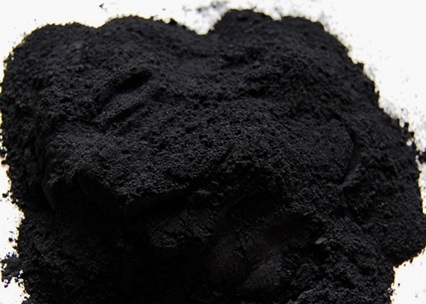
- Q: What are the common failure modes of monolithic refractories in iron and steel applications?
- Monolithic refractories are widely used in iron and steel applications due to their excellent thermal shock resistance, high temperature stability, and mechanical strength. However, like any other material, they are not immune to failure. There are several common failure modes associated with monolithic refractories in iron and steel applications. 1. Spalling: Spalling is one of the most common failure modes of monolithic refractories. It refers to the detachment of refractory material from the surface due to thermal cycling, mechanical stress, or chemical reactions. Spalling can occur due to mismatched thermal expansion coefficients between the refractory and the surrounding structure, leading to cracking and subsequent detachment. 2. Erosion: Erosion is another prevalent failure mode in iron and steel applications. It occurs when the refractory material is subjected to the erosive action of molten metal, slag, or gases. The erosion can be a result of the physical impact of the flowing metal or the chemical attack by corrosive slag components. Erosion leads to the loss of refractory material, decreased lining thickness, and compromised performance. 3. Corrosion: Corrosion is a significant failure mode in iron and steel applications, particularly in contact with aggressive atmospheres or molten metal. Corrosion can result from chemical reactions between the refractory material and the corrosive agents, such as oxides, sulfides, or alkalis present in the environment. It leads to the formation of corrosion products, which can weaken the refractory lining and reduce its lifespan. 4. Thermal shock: Monolithic refractories are exposed to extreme temperature fluctuations in iron and steel applications. Rapid heating or cooling can lead to thermal shock, causing cracking and failure of the refractory material. Thermal shock can occur due to uneven heating or cooling, sudden changes in temperature, or thermal gradients within the refractory lining. 5. Abrasion: In certain iron and steel applications, monolithic refractories can be subjected to abrasive wear. This occurs when the refractory lining comes into contact with solid particles, such as metallic oxides, slags, or raw materials. The repeated impact and rubbing action of these particles can cause erosion and abrasion of the refractory material, leading to its failure. To mitigate these failure modes, proper refractory selection, installation techniques, and maintenance practices are crucial. Regular inspection, repair of damaged areas, and application of protective coatings can help extend the lifespan and performance of monolithic refractories in iron and steel applications.
- Q: What are the quality control measures for monolithic refractories in the iron and steel industry?
- The quality control measures for monolithic refractories in the iron and steel industry include strict material selection, thorough testing of raw materials, regular inspection and maintenance of refractory linings, and continuous monitoring of performance during operation. Additionally, adherence to industry standards and specifications, implementation of quality management systems, and collaboration with suppliers and customers to address any quality issues are also important measures in ensuring the quality of monolithic refractories in the iron and steel industry.
- Q: How does the composition of monolithic refractories impact their performance?
- The composition of monolithic refractories plays a crucial role in determining their performance. Monolithic refractories are essentially unshaped refractory materials that are used to line furnaces, kilns, and other high-temperature equipment. They are preferred over traditional brick and mortar refractories due to their ease of installation and ability to conform to complex shapes. The composition of monolithic refractories includes various components such as aggregates, binders, and additives. The type and proportion of these constituents significantly influence the physical, mechanical, and thermal properties of the refractory material. Aggregates are the major component of monolithic refractories and provide the structural integrity. They can be made of various materials like alumina, silica, magnesia, and carbon. Each aggregate has its own unique properties that determine the refractory's resistance to heat, chemical attack, and mechanical stress. For example, alumina aggregates offer excellent resistance to high temperatures and chemical corrosion, while carbon-based aggregates are preferred for their high thermal conductivity. Binders are added to the mix to provide cohesion and improve the refractory's strength. Common binders include clay, calcium aluminate cement, and colloidal silica. The selection of binders depends on the desired strength, workability, and setting time of the refractory material. Additives are incorporated in the composition to enhance specific properties. They can improve the refractory's resistance to thermal shock, abrasion, or chemical attack. Additives like zirconium oxide, silicon carbide, and graphite are often used to enhance the performance of monolithic refractories in specific applications. The proper combination and proportion of these constituents are crucial for achieving the desired performance of monolithic refractories. The composition affects the refractory's thermal conductivity, thermal expansion, density, porosity, and chemical resistance. For instance, a higher alumina content would improve the refractory's resistance to high temperatures and chemical corrosion, while a higher silica content would enhance its insulating properties. In conclusion, the composition of monolithic refractories has a significant impact on their performance. The selection of aggregates, binders, and additives must be carefully considered to achieve the desired properties and ensure optimal performance in specific high-temperature applications.
- Q: What are the recent developments in monolithic refractories for the iron and steel industry?
- Recent developments in monolithic refractories for the iron and steel industry include advancements in material composition, manufacturing techniques, and application methods. These developments have led to improved refractory performance, enhanced durability, and increased energy efficiency. Some notable developments include the use of new raw materials, such as nano-sized additives and ultra-high temperature-resistant binders, which enhance the refractory's resistance to thermal shock and corrosion. Additionally, advancements in manufacturing techniques, such as advanced mixing technologies and precise curing processes, have resulted in more homogenous and consistent refractory structures. Furthermore, there have been innovations in application methods, including the use of robotic systems for precise and efficient installation, leading to reduced downtime and increased productivity in the iron and steel industry. Overall, these recent developments in monolithic refractories have significantly contributed to the optimization of iron and steel production processes.
- Q: What is the role of monolithic refractories in blast furnaces?
- Monolithic refractories play a crucial role in blast furnaces as they provide high temperature resistance, erosion and corrosion resistance, thermal insulation, and structural integrity. These refractories are used to line the inside of the blast furnace, forming a protective barrier against the extreme heat and chemical reactions occurring within. They help to maintain the integrity of the furnace and ensure its efficient operation by withstanding the aggressive conditions of the molten iron and slag. Additionally, monolithic refractories allow for easier installation and repair compared to traditional brick refractories, making them a preferred choice in blast furnace applications.
- Q: What are the different techniques for installing monolithic refractories?
- Installing monolithic refractories can be accomplished using various techniques, each with its own advantages and suitability for different applications. Some commonly employed methods are as follows: 1. Casting: This involves creating a slurry by mixing the refractory material with water or a binder. The resulting mixture is then poured into molds or directly onto the prepared surface. Once set and hardened, it forms a solid monolithic structure. 2. Gunning: By utilizing a gunning machine, the refractory material is sprayed onto the surface. The material is combined with water or a binder to form a wet mix, which is then propelled onto the surface at high velocity. Gunning is commonly used for on-site repairs or lining larger areas. 3. Ramming: In this technique, the refractory material is compacted into place using a pneumatic or manual ramming tool. Prior to ramming, the material is typically preheated to decrease moisture content and enhance workability. Ramming is often employed for lining smaller areas or filling gaps between bricks or precast shapes. 4. Shotcreting: Similar to gunning, shotcreting involves using a dry mix of refractory material. The dry mix is combined with water or a binder just before being sprayed onto the surface using a high-pressure nozzle. Shotcreting is frequently used for lining larger areas or creating intricate shapes. 5. Troweling: This technique entails applying the refractory material onto the surface using a trowel or similar tool. The material used is typically a wet mix that is spread and smoothed manually. Troweling is commonly employed for patching or repairing small areas, as well as for adding finishing touches. 6. Vibrating: By using a vibrating tool or vibrator, the refractory material is compacted and any air pockets are eliminated. Vibrating is often used to improve the density and strength of the monolithic refractory after it has been installed using other techniques. It is essential to consider various factors, such as the type of refractory material, the size and shape of the area to be lined, and the specific requirements of the application when selecting the appropriate technique. Additionally, proper surface preparation and adherence to installation guidelines are crucial to ensure the effectiveness and longevity of the monolithic refractory.
- Q: How long is the lifespan of monolithic refractories in iron and steel applications?
- The lifespan of monolithic refractories in iron and steel applications can vary depending on several factors. These factors include the type of refractory material used, the specific application, the operational conditions, and the maintenance practices implemented. In general, monolithic refractories used in iron and steel applications are designed to withstand high temperatures, thermal shock, chemical attack, and mechanical stress. They are expected to have a relatively long lifespan compared to other refractory materials. Under normal operating conditions and proper maintenance, monolithic refractories can typically last anywhere from several months to several years in iron and steel applications. However, it is important to note that certain areas of the application may experience more severe conditions and may require more frequent repairs or replacements. Regular inspections and monitoring of the refractories' condition are crucial to identify any signs of deterioration or damage. Any necessary repairs or replacements should be carried out promptly to prevent further damage and minimize downtime. It is also worth mentioning that advancements in refractory technology and materials have led to the development of more durable and long-lasting monolithic refractories. These advancements have increased the lifespan of refractories in iron and steel applications, ultimately improving the overall efficiency and productivity of the operations.
- Q: How do monolithic refractories withstand the alkali attacks in cement kiln applications?
- Monolithic refractories withstand alkali attacks in cement kiln applications due to their unique composition and properties. These refractories are made of high-quality materials such as silica, alumina, and magnesia, which have excellent resistance to alkali reactions. Additionally, they are designed to have dense and compact structures, limiting the penetration of alkali compounds into the refractory material. The dense structure also helps in reducing the permeability of the refractory, preventing alkali infiltration. Moreover, monolithic refractories often have a high melting point, which further enhances their resistance against alkali attacks. Overall, the combination of material composition, compact structure, and high melting point enables monolithic refractories to withstand the harsh alkali environment of cement kilns.
- Q: What are the key properties of gunning mixes used for monolithic refractory repairs?
- The key properties of gunning mixes used for monolithic refractory repairs are high strength, good adhesion, excellent workability, and high resistance to thermal shock and abrasion. These properties ensure that the gunning mix can withstand the intense heat and harsh conditions of refractory applications, providing a durable and long-lasting repair solution.
- Q: How do monolithic refractories enhance the performance of ladle and tundish purging systems?
- Monolithic refractories enhance the performance of ladle and tundish purging systems by providing high thermal insulation, excellent erosion resistance, and increased durability. These refractories help maintain the desired temperature in the ladle and tundish, ensuring optimal conditions for purging operations. Additionally, their erosion resistance properties prevent excessive wear and tear, extending the lifespan of the purging systems. Overall, monolithic refractories play a crucial role in enhancing the efficiency and effectiveness of ladle and tundish purging systems.
Send your message to us
Monolithic Refractories for Iron and Steel Industry - Calcined Petroleum Coke 1-5mm FC:98.5%min
- Loading Port:
- Shekou
- Payment Terms:
- TT OR LC
- Min Order Qty:
- 20 m.t
- Supply Capability:
- 1000 m.t/month
OKorder Service Pledge
OKorder Financial Service
Similar products
Hot products
Hot Searches
Related keywords
